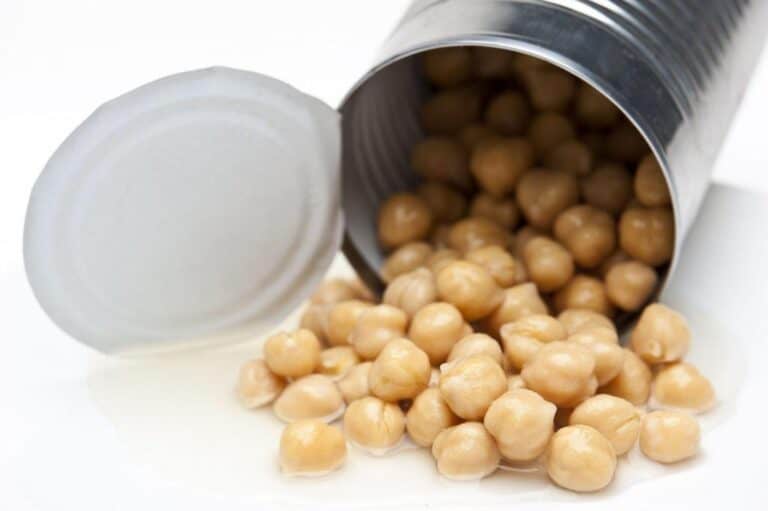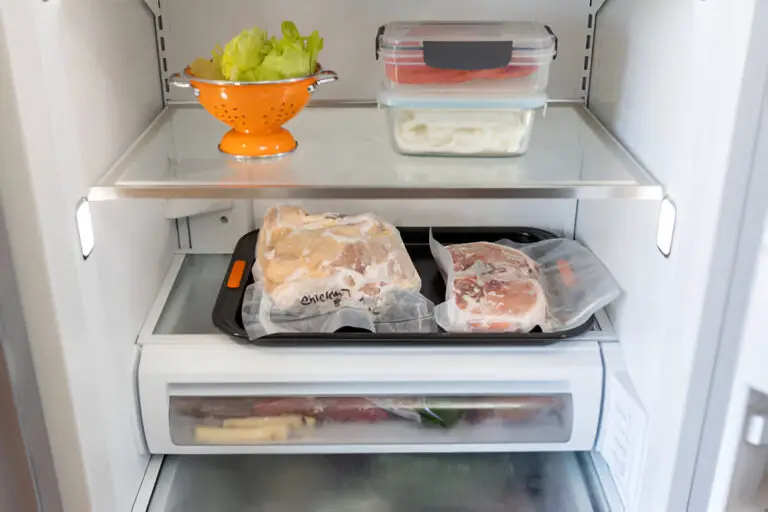How To Make Cookies Spread More When Baking (8 Easy Tips)

While making cookies can seem like a daunting task, mastering the art of cookie baking is easier than you think. But there’s nothing worse than having your cookies turn out differently than you expected.
Have you ever pulled a pan of cookies out of the oven only to find them still in the shape they were in when they went in? You don’t want them to be so thick that they can’t spread as much as you’d like. Or worse, have you found them spread out too thin and burned around the edges?
If so, you’re not alone!
This article will help explain why your cookies are not spreading enough. We’ll cover some common causes and suggest some solutions on how to make your cookies spread more. Those tips and suggestions can help get you back to bakery-quality cookies in no time.
The Main Reason Why Your Cookies Are Not Spreading Enough
The main reason why your cookies are not spreading enough is simple: you are not using the right ingredients when making them.
Many cookie recipes call for a combination of butter and shortening, but not using the right proportions can lead to cookies that don’t spread enough when baking.
Additionally, the type of flour you use can also be a factor. All-purpose flour is the most common type used for baking cookies, but if you substitute it with a higher-protein flour like bread flour, your cookies may not spread as much.
Finally, the temperature of your oven can also be a culprit. If your oven is too hot, your cookies may spread too much while baking, and if it is too cold, they may not spread enough.
Tips #1: Making Cookies Spread by Using Warm Dough
When it comes to making cookies, having the dough at the right temperature is key. Using warm dough allows the cookies to spread out nicely while cooking, giving them a softer texture and a more even shape.
Using warm dough and not freezing cookie dought to spread cookies is a great way to make sure they are all the same size and taste great for any occasion. For this method to work, you need a pan that has been heated to the right temperature and butter or margarine that has been softened.
Once these two ingredients are combined with other dry ingredients, such as sugar and flour, it’s important to let them sit for several minutes before putting them in the oven.
This allows time for the heat of the oven to penetrate into the cookie dough and help it spread out evenly while baking. By using this method, you can create perfectly round cookies every time!
Tips #2: Making Cookies Spread by Adding More Fat
Baking delicious cookies requires the perfect combination of ingredients. One of the most important elements to consider is the fat content.
If you want to make cookies that spread in the oven and come out with a nice, crispy texture, then you need to add more fat. This is because fat helps to soften the flour and sugar, allowing the cookie dough to spread more easily. It also helps to create a richer flavor.
However, if you want to make vegan or dairy-free cookies, then you can also use oil. Coconut oil and vegetable oil are both good options, although coconut oil adds a subtle sweetness. You can also substitute applesauce for a healthier alternative.
When adding the fat, it’s important to mix it thoroughly with the other ingredients. This ensures that the fat is properly distributed throughout the cookie dough. If it’s not mixed well, then the cookies might not spread evenly or have the desired texture.
| To ensure that your cookies spread nicely, make sure to use the right amount of fat. |
Tips #3 Making Cookies Spread by Using More Liquid
An important factor to consider when making cookies is not just what ingredients are being used, but also how much liquid is being added to the mix.
Adding additional liquid to cookie dough, such as melted butter or coconut oil, creates more moisture, which helps make the dough easier to work with. This extra moisture also encourages cookies to spread out in the oven while baking, resulting in thinner and chewier treats.
Also, adding more liquid to cookie recipes makes them taste better and gives them a richer flavor that people won’t miss.
Bakers should keep this simple trick in mind when making their favorite cookie recipes so they can enjoy perfectly thin treats every time!
Tips #4 Making Cookies Spread by Using Melted Butter
One of the key ingredients for making good cookies is butter. Butter is used to help give cookies a nice, crisp texture and can help them spread evenly when baking.
For the best results, melted butter is the way to go. This helps the cookie spread more evenly, leading to a delicious and consistent end product. To melt butter, simply place the butter in a small bowl and heat it in the microwave or on the stove until it is completely melted. Once the butter is melted, you can use it to make your cookies.
When making cookies with melted butter, it’s important to use a light hand. Too much butter can lead to greasy cookies that don’t hold their shape. A light touch will also help make sure that the butter is spread out evenly in the cookie dough, which will help the cookies spread out evenly.
Another benefit of using melted butter is that it can help cookies bake more quickly and evenly. Melted butter will help heat spread evenly through the cookie, which will make it taste better overall.
Tips #5 Making Cookies Spread by Using White Sugar
When using white sugar in cookie recipes, it helps increase the amount of spread achieved while baking. This is because it has a neutral taste that goes well with other ingredients without overpowering them.
It also has a higher melting point than other sugars, meaning it can hold its shape longer during baking. This allows for more even spreading when compared to alternatives like brown sugar or honey.
White sugar also adds crispness and texture to cookies as they bake and cool off – another desirable effect for many cookie bakers! Using white sugar as the primary sweetener in your cookies will ensure that you always get the best spreads and the most delicious cookies.
Tips #6 Making Cookies Spread by Heating Your Oven
For the perfect cookie, you must make sure that your oven is heated to the correct temperature. This is essential to ensuring that your cookies spread and bake evenly.
Before you begin baking your cookies, preheat your oven to the desired temperature. This can be done by adjusting the thermostat or turning the oven on manually. Make sure to adjust the oven rack to the middle position, as this will help to ensure even baking.
Once your oven is heated, place your cookie sheets in the oven and wait for them to heat up. If you have a convection oven, you can set it to a lower temperature to help the cookies spread more evenly.
When you are ready to bake the cookies, make sure to spread the dough evenly across the baking sheet. You can use a spatula or spoon to help with this task. Once all the dough is spread, place the cookie sheet in the oven and bake for the specified amount of time. Be sure to check the cookies.
Tips #7 Making Cookies Spread by Banging Them on Your Counter
Making the perfect cookie can be a challenge for even the most experienced baker. But what if you could make those delicious treats spread out to perfection without having to fuss over them?
You may be surprised to find that some bakers swear by an unusual technique of banging their cookies on the countertop!
Banging your cookies on the counter is a simple and effective way to get them just right. All it takes are a few firm taps with your hand or spatula, and voila—fluffy, evenly spread cookies.
This method works best with thicker cookie doughs, like chocolate chip or oatmeal raisin, as they are malleable enough to shape when tapped but still firm enough that they don’t break apart too easily. Plus, slamming your dough gives you more control in terms of how thin or thick you want each cookie to be.
Tips #8 Does Baking Soda Make Cookies Spread?
Baking soda is a common ingredient used in baking, and it often appears in cookie recipes. It is known for its leavening power, or the ability to make dough rise, and it is often used in combination with other leavening agents such as baking powder.
But does baking soda make cookies spread?
Baking soda has a slightly alkaline pH, which can affect the texture and taste of baked goods. In the case of cookies, baking soda may cause them to spread more than they would without its addition.
This is because baking soda can react with the other ingredients in the cookie dough, creating carbon dioxide bubbles that cause the dough to expand. This can result in cookies that are thinner and more spread out than normal.
| Baking soda can affect the structure of the proteins in the dough, making them more flexible and increasing the chances of the cookie spreading out. |
Conclusion
Making cookies spread evenly can be a challenge for even the most experienced bakers. The key to achieving perfectly-baked cookies lies in understanding how heat spreads throughout your oven.
With a few simple tips like those above, however, you can make sure that your cookies come out of the oven looking beautiful and delicious. The secret is to use melted butter in place of solid butter.






